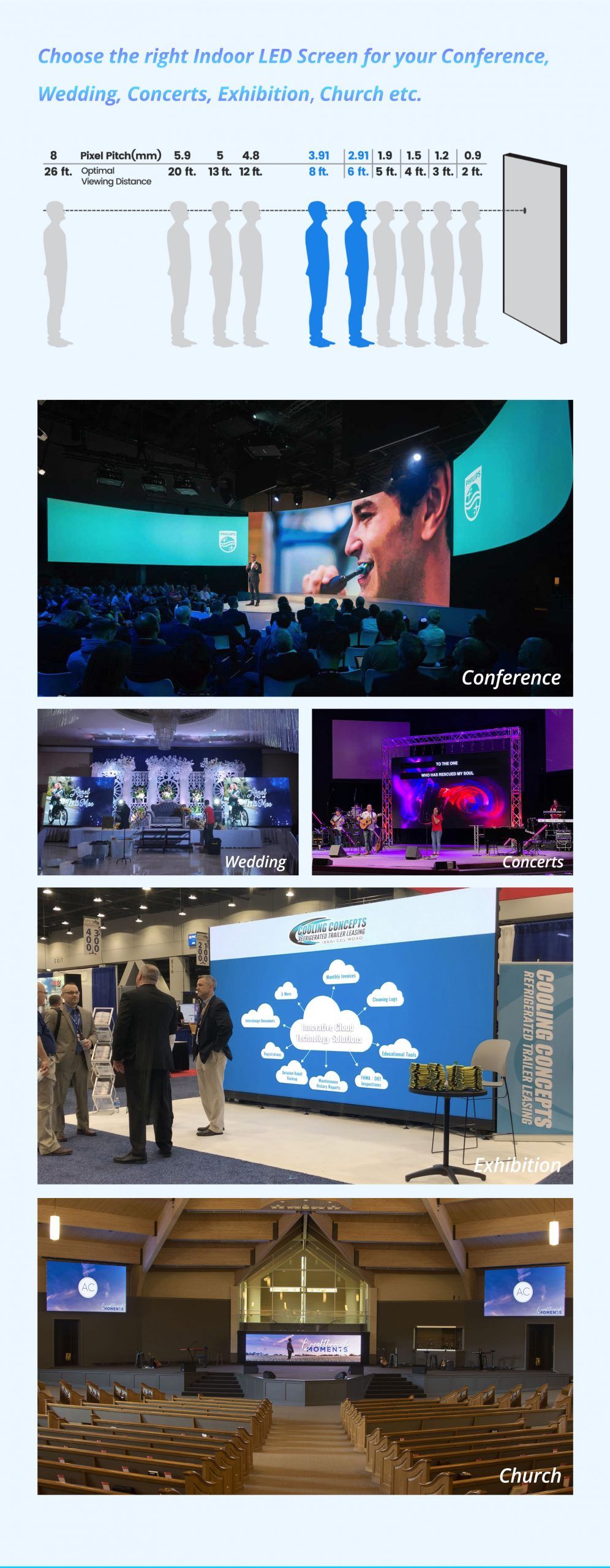Industry news
Adjustment method of LED display screen colors
LED display screen is more and more favored by the market because of its excellent brightness and color performance and seamless picture integrity. However, some cities also have problems affecting the life and traffic of surrounding residents due to the high brightness of LED display screen. How to adjust the brightness and color of LED display? Here, I’ll share some tips.
Selection of primary color wavelength
LED display screen is widely used in all walks of life, and there are different requirements for the primary color wavelength of LED in different application places. Some of the selection of the primary color wavelength of LED is to achieve good visual effect, some is to meet people’s habits, and some are the provisions of industry standards, national standards and even international standards. For example, the selection of the primary color wavelength of the green tube in the full-color LED display screen; In the early days, yellow green LEDs with a wavelength of 570nm were widely used. Although the cost was low, the color gamut of the display screen was small, the color reduction degree was poor and the brightness was low. After selecting the pure green tube with the wavelength of 525nm, the color gamut of the display screen is nearly doubled, and the color reduction is greatly improved, which greatly improves the visual effect of the display screen. Another example is the stock market display. People are usually used to using red to indicate the rise of stock prices, green to indicate the decline of stock prices, and $to indicate flat prices. In the transportation industry, the national standard strictly stipulates that the blue-green band indicates passage and the red band is prohibited. Therefore, the selection of primary color wavelength is one of the important links of LED display screen.
two
Brightness adjustment
1. Modulating pulse width, using the changing frequency that human eyes can feel, and using pulse width modulation method to realize gray control, that is, periodically changing the optical pulse width. Pulse width modulation is more suitable for digital control and has been widely used. The most common method is to adopt microcomputer. At present, almost all LED displays adopt pulse width modulation to control the gray level.
2. The normal LED tube allows the continuous task current to be about 20 mA. By changing the current flowing through the LED, except that the red LED is saturated, the brightness of other LEDs is basically proportional to the current flowing.
three
Allocation of white field color coordinates
White field color coordinate allocation is one of the most basic technologies of full-color LED display. However, in the mid-1990s, due to the lack of industry standards and basic testing methods, the white field color coordinates were usually determined only by human eyes and feelings, resulting in serious color deviation and randomness of white field color temperature. With the promulgation of industry standards and the completion of testing methods, many manufacturers began to standardize the color matching process of full-color screen. However, due to the lack of theoretical guidance of color matching, some manufacturers often allocate 100 field color coordinates at the expense of the gray level of some primary colors, and the comprehensive performance can not be improved.
